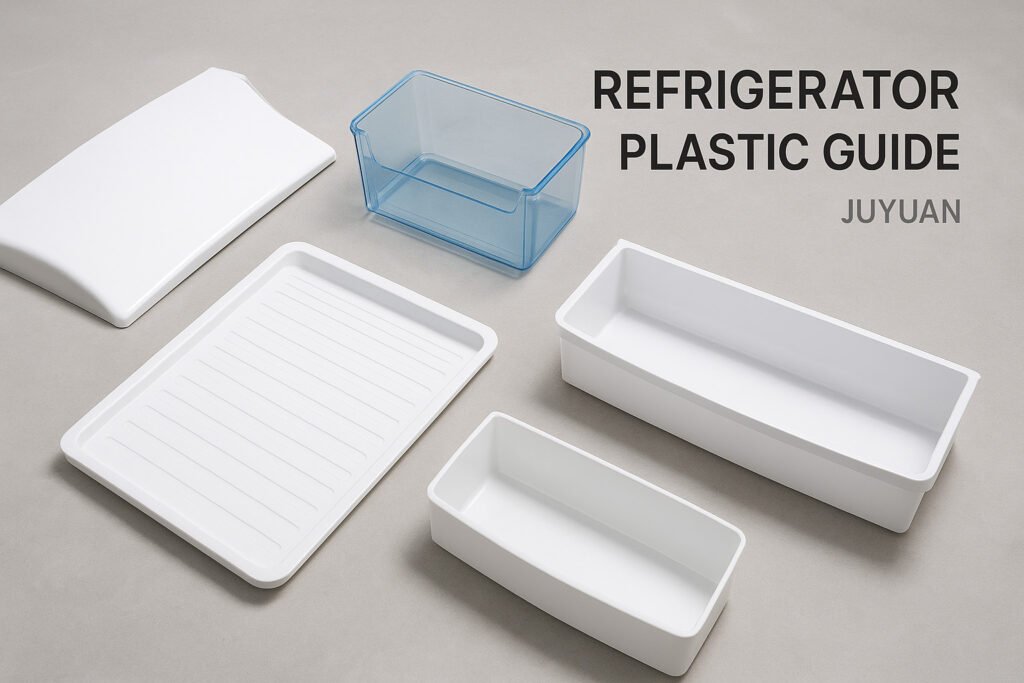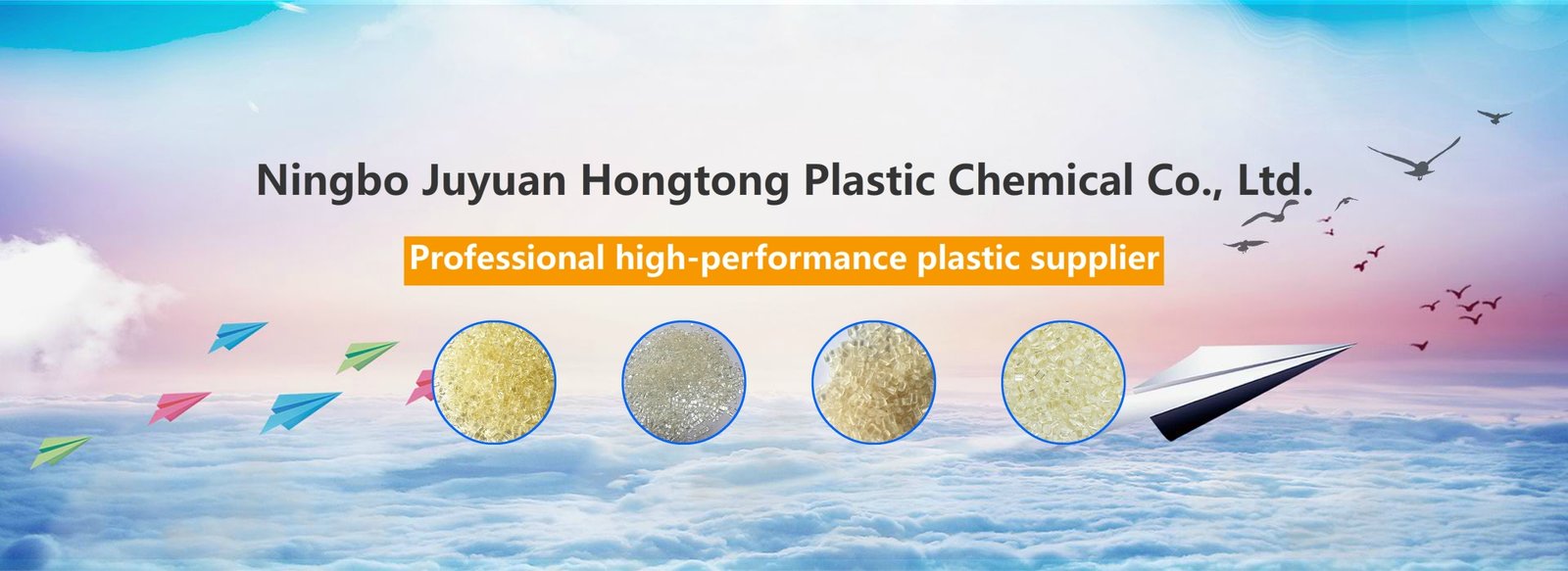In the home appliance industry chain, the manufacturing of plastic parts for refrigerators is an underestimated "systematic project".
From the exterior panel to the internal sliding box, from the shelf support to the bottom structure, every plastic component directly affects the overall quality, energy consumption performance and service life of the entire machine.
For injection molded parts manufacturers, how to strike a balance among performance, cost and supply stability has become the core of competition.

I. The Industrial Panorama of Plastic Components for Refrigerators: Seemingly simple, but actually complex
In the manufacturing process of refrigerators, plastic components account for approximately 40% to 60% of the materials used in the entire machine.
These parts may seem ordinary, but they play crucial roles such as supporting structures, heat insulation protection, appearance decoration, and sealing functions.
Typical plastic components include:
・Inner liner and door body lining: High gloss, cold resistance, and food contact safety are required.
・Door body panel and decorative strips: The appearance should be stable, scratch-resistant and UV-resistant.
・Sliding boxes and shelves: High impact resistance and dimensional stability are required.
・Base, casters, air duct components: High strength and chemical resistance are required;
・Small parts such as seals and brackets: Both flexibility and processability are required.
The materials and processing techniques used for different components vary significantly, corresponding to completely different material selection logics.
Ii. Analysis of Mainstream Materials for Refrigerator Plastics
1. HIPS (high impact polystyrene) - main material for inner liner
Characteristics:
・High gloss, good fluidity, and low molding shrinkage rate;
・It has excellent low-temperature toughness and is not prone to cracking.
・Antibacterial agents, flame retardants and food-grade formulas can be added.
Advantages:
✅ Smooth surface, suitable for vacuum forming or injection molding;
✅ Affordable cost, suitable for large-scale production;
✅ Can be blended with ABS to enhance strength and heat resistance.
Application:
・Inner liner of the refrigerator
・Inner lining of the freezer
・Internal partition components
Common Problems and Solutions:
・【 Question 】 Low-temperature brittle cracking → Select high-rubber-content modified HIPS
・【 Question 】 High-gloss surface shrinkage → Optimize fluidity and molding temperature
・【 Problem 】 Unpleasant smell during installation → Use of low-VOC grade materials
2. ABS (acrylonitrile butadiene styrene) - the balancer of strength and appearance
Characteristics:
・It has excellent comprehensive mechanical properties.
・The surface can be electroplated or painted.
・It has both rigidity and toughness.
Advantages:
✅ impact-resistant, easy to process, colorable;
✅ Blending with PMMA and ASA can enhance surface appearance or weather resistance;
✅ is suitable for medium and high-strength components such as door linings, drawers, and structural brackets.
Application:
・Inner lining of the refrigerator door
・Drawer guide rail
・Supporting structural components
Common Problems and Solutions:
・【 Question 】 Mold sticking → Select modified materials with low residual stress
・【 Question 】 Color difference fluctuation → A highly stable masterbatch system is required
・【 Problem 】 Insufficient low-temperature impact resistance → Use rubber reinforcement or ABS/PP blends
3. PP (polypropylene) - representative of lightweight
Characteristics:
・Low density and good chemical resistance;
・The cost advantage is obvious;
・It has relatively high thermal stability.
Advantages:
✅ toughness can be enhanced by copolymerization or rubber modification;
✅ is suitable for forming push-pull boxes and shelf parts with complex structures;
✅ can be reinforced with glass fiber to enhance rigidity.
Application:
・Sliding box, drawer
・Base, air duct support
・Sealing cover assembly
Common Problems and Solutions:
・【 Question 】 Brittle at low temperatures → Use an impact-resistant PP copolymer system
・【 Question 】 Shrinkage deformation → Improvement through molding control and glass fiber reinforcement
・【 Question 】 Static dust accumulation → Use anti-static modified PP
4. ASA/PMMA-ABS blend - for high-end appearance parts
Characteristics:
・ASA: UV-resistant, weather-resistant, and color-stable;
・PMMA-ABS: Balancing high gloss and impact resistance.
Advantages:
✅ has an excellent appearance and high gloss;
✅ anti-aging, not prone to fading;
✅ is suitable for high-end refrigerator door panels and decorative strips.
Application:
・Outer panel of the door
・Decorative mask
・LOGO decorative piece
Common Problems and Solutions:
・【 Question 】 Injection molding flow marks → High fluidity grade required;
・【 Question 】 Ultraviolet aging discoloration → Select UV-stabilized formula;
・【 Problem 】 High cost → Adopt an ASA/ABS blend solution to reduce costs.
5. PA/PBT - a powerful carrier of structural and functional components
Characteristics:
・PA: Strong toughness, wear-resistant and oil-resistant;
・PBT: High rigidity, dimensional stability, and low water absorption rate.
Advantages:
✅ Suitable for high-stress components;
✅ Can be glass-fiber reinforced or flame-retardant modified;
✅ High heat deflection temperature, resists deformation.
Application:
・Compressor bracket
・Air duct housing
・Base, casters
Common Problems and Solutions:
・【 Question 】 Water absorption deformation → Select low hygroscopic modified PA;
・【 Question 】 Warping → Reinforcement with glass fiber short-cutting;
・【 Problem 】 High cost → Partial substitution to PBT or PA/PP blending solutions.
Iii. Practical Challenges for Manufacturers
Even if they are familiar with plastic systems, manufacturers still often encounter:
・The differences in processing Windows among different materials (temperature, mold venting, demolding force);
・Batch instability leads to color difference and warping.
・International brand materials are experiencing price hikes and unstable supply periods.
・The development cycle of new materials is long and the testing cost is high.
Therefore, a truly high-quality supply chain partner is not merely a seller of raw materials but also a "solution provider".
Iv. Our Juyuans Solution: From Materials to Applications
As a material supplier that has long served the plastic supply chain for home appliances, we are well aware of every link in the manufacturing end.
We offer
✅ Specialized formula systems for different parts: such as high-gloss HIPS, impact-resistant ABS, low-temperature PP modified materials;
✅ Stable batch control and color difference management;
✅ Low VOC/low odor material system, in compliance with RoHS & REACH standards;
✅ Domestic alternative to international brand solutions, can replace LG, SABIC, Chi Mei, Toray, etc.
✅ Rapid sample supply and technical support services to assist customers in achieving seamless transition from development to mass production.
At the same time, we also assist customers in optimizing:
・Material selection;
・The injection temperature is matched with the mold.
・Suggestions for optimizing product structure
・Compliance support for export markets.
V. Future Trends of Plastic Parts for Refrigerators
1. Lightweight and energy-saving design
Use high-rigidity modified PP or microfoaming materials to reduce the energy consumption and material usage of the entire machine.
2. Applications of recyclable and renewable materials
Bio-based and recyclable ABS/HIPS have begun to enter high-end refrigerator components.
3. Appearance and touch upgrade
From high gloss, metallic texture to skin-like feel and matte surface, material aesthetics is becoming a differentiating competitive point.
4. Domestic substitution continues to deepen
Domestic brands have achieved performance parity or even surpassing in fields such as home appliance grade ABS, PP copolymer materials, and ASA.
Vi. Conclusion
The competition among plastic parts of refrigerators has never been about "whose plastic is cheaper".
Rather, it is about "who can make performance more stable, production smoother and delivery more reliable".
We understand the true needs of every manufacturer
From formula to molding, from environmental protection to cost,
Every plastic particle is related to the rhythm of the production line and the quality of the brand.
If you are looking for a long-term partner in home appliance grade plastics,
We are willing to help each of your products go further with our professional formula system and rapid response service.

